
Whiskey & Water
Water’s Journey through the Bourbon Making Process
In addition to the grain, our signature yeast, and careful techniques, water plays an integral role in the production of American Whiskey. Since Bourbon can be as much as 60% water, using the right kind of water at the right time in the process is essential for quality whiskey.
Deep beneath the ground in Bourbon country, water trickles through ancient limestone shelves, filtering the water and adding important minerals needed for the production of quality Bourbon.
The water emerges from natural springs and underground rivers, cutting channels and caves into the sedimentary rocks. As the water filters through the bedrock, two important processes occur...
First, the limestone removes iron and other impurities that could harm the flavor and quality of the spirit. Any iron present will react with the barrel, turning the whiskey black and producing acrid flavors.
Second, the limestone adds trace minerals like magnesium and calcium carbonate, which will play a necessary role in Bourbon’s fermentation process.
These minerals also give the limestone water a crisp, clean taste. Using it to make whiskey imparts the same character to our final products.
Once this mineral-rich water arrives at our Bernheim Distillery, it helps us produce around 1,300 barrels of whiskey per day.
The water is combined with grains like corn, malted barley, rye, and wheat and heated in a mash tub - a cooker designed especially for this purpose. The grains and water are cooked together for about 90 minutes, until they become a sweet, porridge-like mash.
Then, our signature yeast strain is added to the mash, where the special qualities of the limestone water enhance the fermentation process.
The yeast consume the minerals as part of their healthy diet, using them in their normal metabolism as they process the sugars from grains and convert them into alcohol and other flavor components that contribute to the unique character of our whiskeys.
This creates a product known as “distiller’s beer” which is then taken into our copper stills. There, steam is added at the base of the still to strip the alcohol from the beer.
The alcohol vapors are passed to a condenser, which cools them into a liquid of 140 proof, or 70% alcohol and 30% water. Now, it’s time for barreling.
By law, Bourbon must enter the new charred oak barrel at no more than 125 proof. More limestone water is added at the barreling stage to achieve the proper proof. The barrels are placed in open-air rickhouses to age, stacked on wooden ricks, three barrels high.
Water molecules are smaller than alcohol, and can enter and exit through the oak’s pores more easily. On the upper floors of the rickhouse, hot ambient temperatures and low humidity draw water out of the barrel, driving up the proof of the spirit inside.
On the cooler floors closer to the ground, moisture in the air is absorbed into the barrels, lowering the proof.
Season after season, these temperature and humidity changes cause the liquid to move in and out of the charred and caramelized oak, absorbing all the delicious, barrel-aged flavors that characterize Bourbon and American Whiskey.
Once a barrel has reached peak maturity, which can take anywhere from 4 to more than 20 years, it is hand-selected by our Master Distiller and expert tasting team and prepared for bottling.
A batch of Bourbon is mingled from several barrels to create consistency and the signature taste profile for a particular whiskey.
Before being added to the bottle, water is typically added to the batch to create the ideal proof for sipping. At this stage, the Kentucky limestone water is filtered using reverse osmosis.
The reverse osmosis process uses pressure to push the water through an extremely fine membrane that only lets water molecules through. This removes any other compounds that could impart a negative flavor to the whiskey. The filtered result is affectionately known as “R.O. water.”
Once a Bourbon has been brought to the desired proof, it is bottled, sealed tightly, and sent off into the world to be enjoyed.
Water also plays a role in the sipping experience. When a Bourbon is poured into the glass, water can be added either as room-temperature liquid or in the form of ice.
The water interacts with the whiskey, releasing important flavor and aroma molecules like esters that improve the sensory experience as they hit your nose and palate.
We always recommend adding a few drops of water or ice as you sip a Bourbon for the first time to open up its aroma and taste profile.
From start to finish, water plays a key role in the production and enjoyment of quality Bourbon. Along with the abundant local grain and the strong oak trees that become our barrels, the limestone-rich water of Kentucky brings a true sense of provenance and regional terroir to America’s Native Spirit.
Heaven Hill Distillery is fortunate to be located in such a rich landscape, where even the water does wonders for our award-winning American Whiskeys.